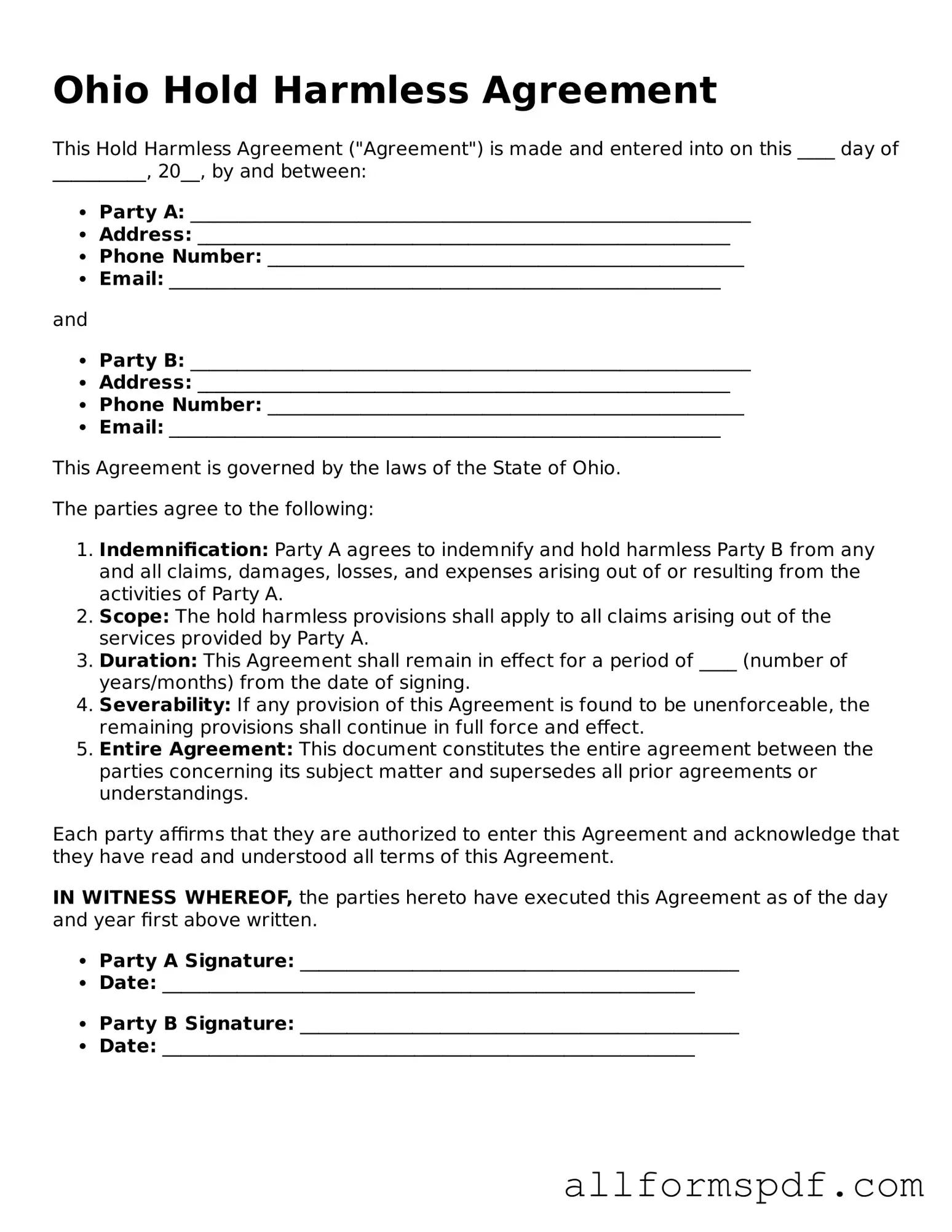Filling out the Ohio Hold Harmless Agreement form can be a straightforward process, but many individuals make common mistakes that can lead to complications down the line. One frequent error is not reading the entire document carefully. Skimming through the agreement may cause you to overlook important details, such as specific terms or conditions that could affect your rights and responsibilities.
Another mistake is failing to provide complete information. Incomplete forms can lead to delays or even rejection of the agreement. Ensure that all required fields are filled out accurately. This includes your name, address, and any relevant dates. Double-checking this information can save you time and prevent issues later on.
Some individuals neglect to consider the implications of the agreement. The Hold Harmless Agreement is designed to protect one party from liability, but it’s crucial to understand what you are agreeing to. If you do not fully grasp the consequences, you may find yourself in a difficult situation if an incident occurs.
Additionally, people often forget to sign and date the document. A signature is essential for the agreement to be valid. Without it, the agreement may not hold up in a legal context. Always ensure that you have signed and dated the form before submission.
Another common oversight is not having the agreement reviewed by a knowledgeable person. While you may feel confident in your understanding of the document, seeking a second opinion can provide clarity. An attorney or legal advisor can help identify any potential issues or misunderstandings.
Some individuals also make the mistake of using outdated forms. Legal documents can change over time, and using an old version may lead to complications. Always check for the most current version of the Ohio Hold Harmless Agreement to ensure compliance with the latest requirements.
Moreover, failing to keep a copy of the completed form is a mistake that can cause problems later. After submitting the agreement, retain a copy for your records. This way, you have proof of what was agreed upon, which can be vital if any disputes arise.
Another error is misunderstanding the scope of the agreement. The Hold Harmless Agreement typically covers specific activities or situations. If you assume it covers more than it does, you may be unprotected in certain circumstances. Be clear about what the agreement entails.
Lastly, some individuals may rush through the process, thinking it is a simple formality. Taking your time to understand and complete the agreement thoroughly can prevent future headaches. A little patience now can lead to a smoother experience later on.
